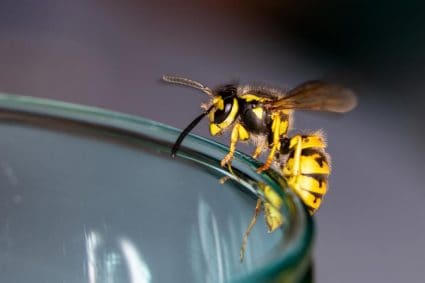
Deer are beautiful creatures to observe from a distance, but when they start frequenting your garden or yard, they can cause significant damage to your trees. So, how can you keep deer away from your trees? This article will discuss various methods, ranging from physical barriers to deer-repellent plants and commercial products, to keep these graceful creatures at bay.
To keep deer away from trees, you can use physical barriers like fencing or tree guards, plant deer-repellent shrubs and plants, apply deer-repellent sprays, use scare tactics like motion-activated sprinklers or lights, and hang scent-based deterrents. You can also use commercial products designed to deter deer. Monitoring deer activity and planting deer-resistant plants can further help protect your trees.
Why Do Deer Approach Trees?
Deer approach trees for several reasons. These include feeding on leaves, twigs, and buds, particularly during fall and winter when food sources are scarce. Male deer or bucks engage in a behavior called rutting during the breeding season, rubbing their antlers against trees to remove the velvet covering and mark their territory. This can cause significant damage to young trees. Deer also use trees and surrounding vegetation for cover and protection from predators.
The Impact of Deer on Trees
Frequent deer visits can have several negative impacts on trees. These include disruption of wildlife communities, impairment of new tree growth, reduction of tree species diversity, suppression of tree growth, and damage to tree stems and branches. Intense browsing by deer can suppress the growth of sprout and seedling oaks and maples, preventing them from repopulating the forest.
Effective Methods to Deter Deer from Trees
There are several methods to deter deer from trees, and they range from physical barriers to repellents and scare tactics.
Physical Barriers
Installing fencing or netting around the trees can prevent deer from accessing them. A 6-foot welded wire fencing attached to metal T-posts can form a square of protective wire around each tree. Another option is tree guards, which can be wrapped around the trunks of individual trees to protect them from deer damage.
Deer-Repellent Plants
Planting shrubs and plants that deer find unappealing around the trees can help deter them. Examples include boxwoods, short needle spruces, and ornamental grasses.
Deer-Repellent Sprays
Applying deer-repellent sprays on a routine basis can help stop deer from eating your plants. These sprays usually contain ingredients that interfere with the deer’s sense of smell and taste.
Scare Tactics
Installing motion-activated sprinklers, lights, or ultrasonic devices can startle deer and deter them from approaching the trees.
Scent-Based Deterrents
Hanging bars of soap, bags of hair, or other strong-smelling items near the trees can confuse a deer’s sense of smell and discourage them from browsing.
Commercial Products to Keep Deer Away from Trees
Several commercial products are designed to keep deer away from trees. Examples include DeerPro, Bobbex Deer Repellent Spray, Plantskydd Deer Repellent, and TRICO® Deer Repellent. These products use various methods like scent and taste to deter deer from damaging trees.
Monitoring the Effectiveness of Your Deer Deterrence Methods
Regularly observing deer activity and damage in your yard, setting up trail cameras, and assessing the overall health of your landscape are ways to monitor the effectiveness of your deer deterrence methods.
Deer-Resistant Plants for Landscaping
Planting deer-resistant plants can help minimize damage to your landscape if deer are prevalent in your area. Some examples include panicle hydrangea, osmanthus, ninebark, Japanese andromeda, red twig dogwood, boxwood, cinquefoil, and daphne.
Conclusion
While deer are a delight to watch, they can cause significant damage to your trees. However, by employing a combination of physical barriers, repellents, scare tactics, and deer-resistant plants, you can protect your trees and enjoy a deer-free garden. Remember to monitor the effectiveness of your methods and make adjustments as necessary.
Frequently Asked Questions
How often should I apply deer-repellent sprays?
The frequency of application may vary based on the specific product instructions, weather conditions, and deer activity in your area. However, a general rule of thumb is to apply deer-repellent sprays once every 30 days and after heavy rainfall.
What other types of physical barriers can be used to deter deer?
Other than fencing or netting, you can also use tree shelters or tubes. These are typically made of plastic and can provide protection for young trees against deer damage.
Can I use homemade deer repellents?
Yes, homemade deer repellents can be an effective and economical option. Common ingredients include eggs, garlic, hot peppers, and dish soap. However, these may need to be applied more frequently than commercial products.
What time of year are deer most likely to damage trees?
Deer can cause damage to trees at any time of the year. However, they’re most likely to do so during the fall and winter when their natural food sources are scarce, and during the breeding season when bucks engage in rutting behavior.
Will deer-repellent plants completely keep deer away from my garden?
Deer-repellent plants can deter deer, but they may not completely keep them away, especially if food sources are scarce. They should be used in conjunction with other deterrent methods for the best results.











